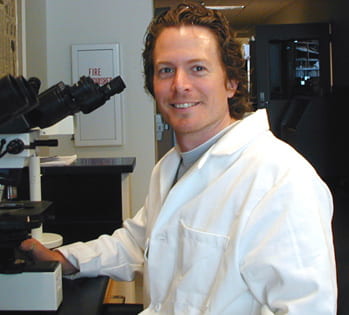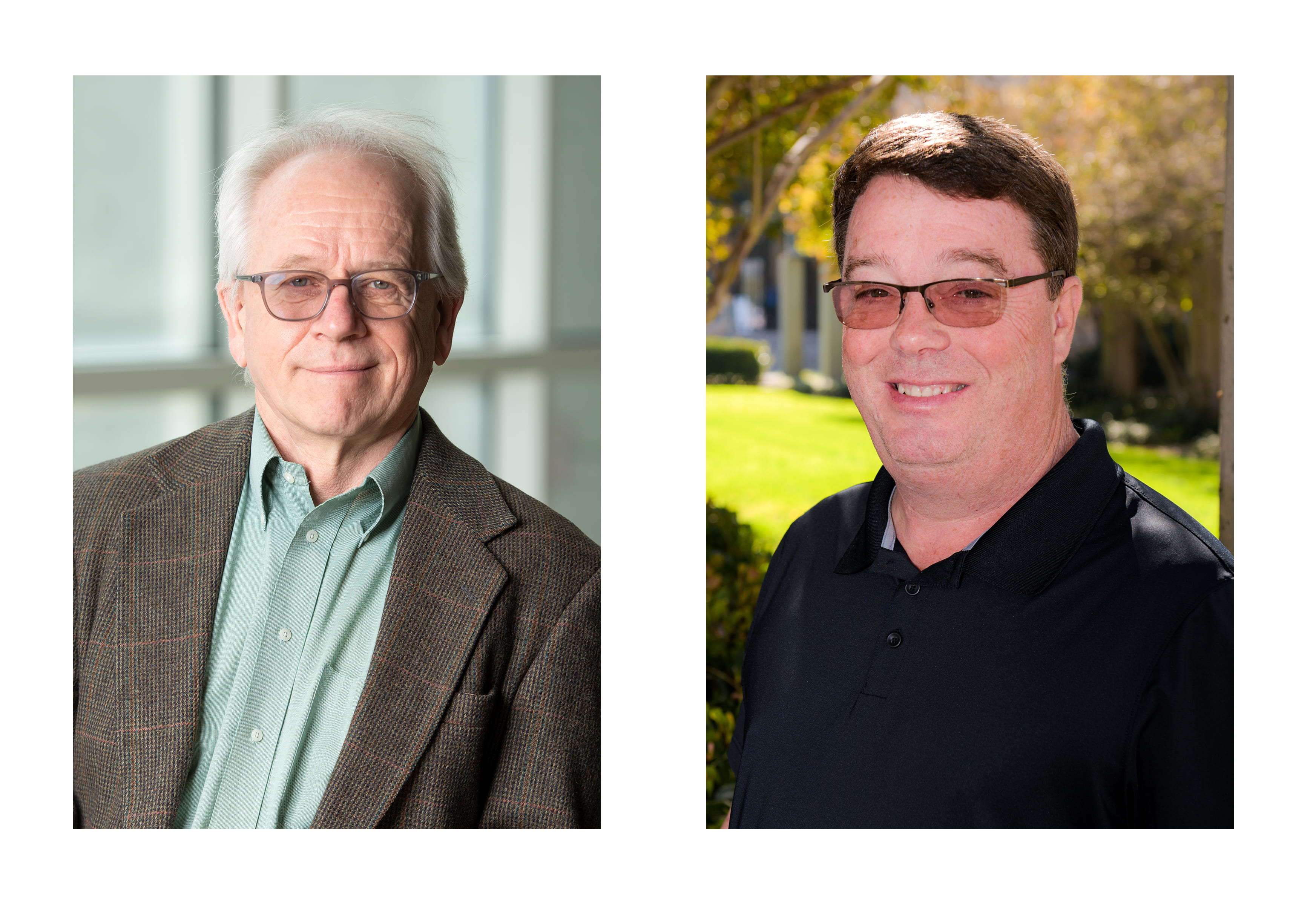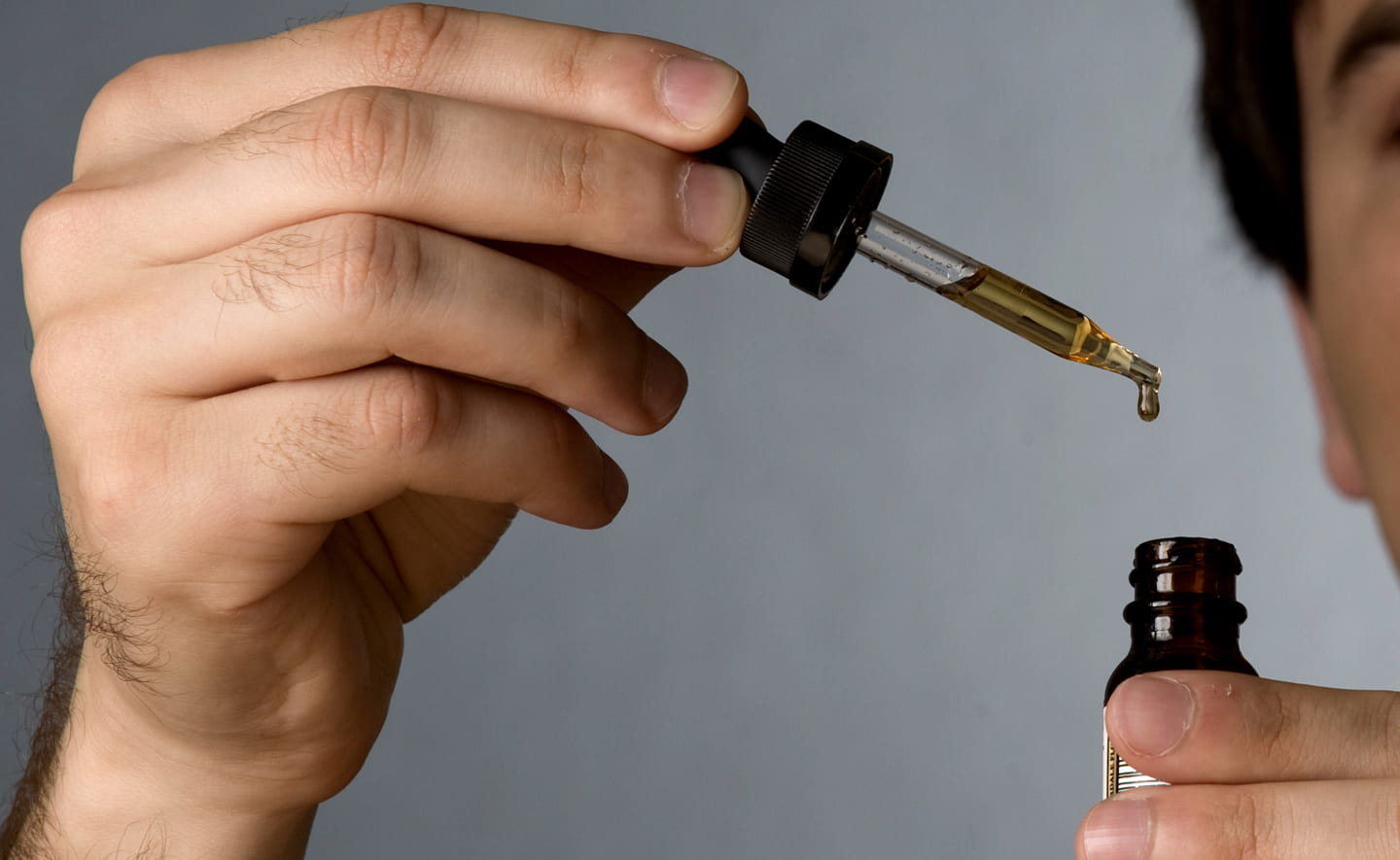Stimulating stem cells
Field holds tremendous promise, which UCI researchers are working to fulfill

“There may be one or two major events in the health sciences each century,” says UCI cell biologist Hans Keirstead, “and, in this century, insight into the working of stem cells is one.”
Surely there are few frontiers that offer as much hope to those who suffer from some of the most debilitating diseases: diabetes, Alzheimer’s, Parkinson’s, schizophrenia, spinal cord injury and others. Nor is there another field that promises to shed so much light on one of biology’s primary and persistent mysteries: how an organism develops from a small cluster of undifferentiated cells into a wildly complex structure of highly specialized and integrated ones.
Stem cells, which have the capacity to replicate themselves and to shape-shift into other kinds of cells, come in two basic types: “Adult” stem cells are found in small numbers in the fully developed body. They are sparsely distributed, hard to isolate and difficult to reproduce. Embryonic stem cells, on the other hand, are found only in the newly conceived embryo, where they cluster just before beginning to differentiate. Left alone, embryonic cells morph into neurons, muscle tissue, liver cells and so on. If they are removed and cultured instead, they will both replicate indefinitely and, it is thought, retain their potential to become any type of cell.
RESTORATIVE POWERS
The first quality of stem cells, their reproducibility, makes it possible to get enough of them to study and, eventually, to use therapeutically. The second quality, their amazing plasticity, however, is where scientists see so much clinical potential. Keirstead, for example, takes embryonic stem cells, coaxes them into oligodendrocytes, the cells that form the myelin that insulates axons, and then injects them into the damaged spinal columns of rats. The cells migrate to the trauma site, where they appear to integrate perfectly, often restoring the animal’s ability to move its legs in a coordinated fashion. If it works as well on humans, Keirstead’s method could transform the lives of hundreds of thousands of spinal injury and multiple sclerosis victims worldwide, he says. Keirstead is scheduled to begin conducting human clinical trials — the first in the United States to employ embryonic stem cells — within two years, although, even in the best case, widely available treatments would be several more years off.
If the “big bang” of embryonic stem cell research began in 1998, when the first human embryonic stem cells were cultured, its expansion was nearly flash-frozen in 2001, at least in the United States, by strict new federal funding restrictions. Harvesting stem cells destroys the days-old embryo, and so is objectionable to some right-to-life advocates.
In November 2004, California voters bypassed those funding restrictions by approving Proposition 71, which allocates $3 billion over the next decade specifically to stem cell research. The big bang has resumed, and suddenly California is at its center.
“We can attract new faculty, amplify current research and pursue new collaborations and avenues of research,” says Susan Bryant, dean of the School of Biological Sciences, who has spearheaded the creation of an interdepartmental Stem Cell Research Center at UCI. Bryant and Oswald Steward, director of UCI’s Reeve-Irvine Research Center, are members of the governing commission of the new California Institute for Regenerative Medicine.
HEALTHY HISTORY
Numerous UCI researchers already study stem cells and the biology behind their powerful mutability.
“We have a strong background in the field of regeneration,” says Bryant, an authority on the ability of some amphibians to regenerate new body parts. The biology of regeneration is key to understanding both how stem cells work and how they might be applied to repair damaged tissue in the human body, she says. “Amphibians regenerate perfect replacement limbs so you can’t tell the lost leg from the new. Embryonic stem cell therapies may provide a kind of shortcut through that process for people, allowing regeneration of nerves, heart and pancreatic cells, for instance,” Bryant says.
Hans Bode, a professor of developmental and cell biology, is studying the evolution of stem cells in even older animals. For three decades, he has focused on a simple animal called the hydra, which employs stem cells to both live indefinitely and to replace lost parts with perfect facsimiles. Understanding the different hydra cell types used for regenerative patterning should shed light on basic biological questions and help researchers explain development in all animals.
Anne Calof, a neuroscientist in UCI’s anatomy and neurobiology department, studies the signals that regulate the creation of stem cells in the olfactory lobes of mice. She and her colleagues have identified a protein that appears to inhibit the formation of new stem cells, a finding that intrigues medical researchers who conceivably could one day use the protein to stimulate neural repairs in human brains.
RENEWED VIGOR
With the new infusion of state funds, says Bryant, UCI will be able to amplify current research, attract new scientists and students interested in working on stem cells, and fuel new collaborations throughout the university.
“It is thrilling to be on the cutting edge of something so big,” adds Keirstead, whose success creating new insulating tissue for nerve fibers in a live animal model gained nationwide interest. “But my real dream is to develop a therapy that could help people and see it go to market.”
That dream may not be too far off.


